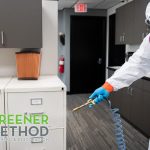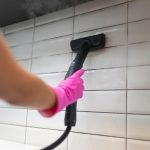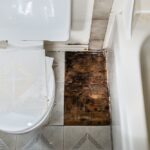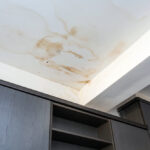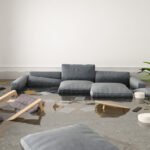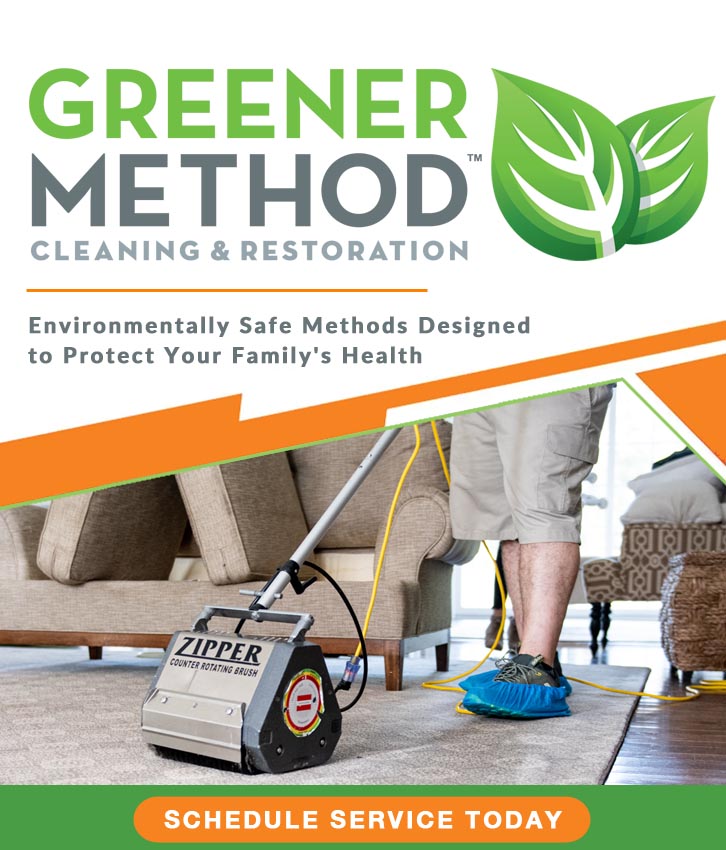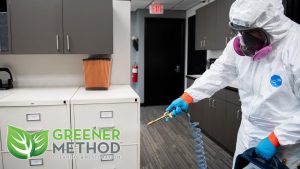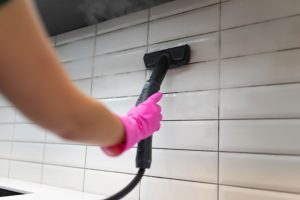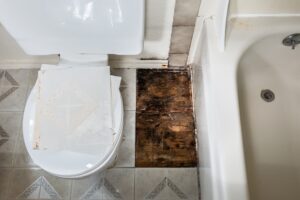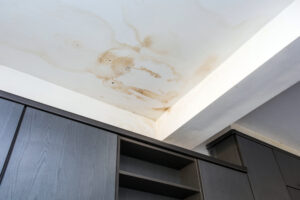Did you know that mold can start growing in your home within just 24 hours if water damage is not properly addressed? This statistic underscores the urgency of taking swift action to mitigate the damage and protect your home. Water damage restoration is a critical process that ensures the integrity of your property and minimizes long-term damage.
When faced with water damage, the first step is identifying the source of the problem to prevent further water ingress. This immediate step is crucial for water damage restoration. Safety must always come first—turning off electricity prevents potential hazards. Relocating valuables to dry areas also helps minimize losses. Engaging with your insurance provider right away is essential, and documenting the damage can significantly support your claim process.
Acting quickly allows for immediate steps after water damage to be executed effectively. This includes contacting professional water damage restoration services such as COIT Cleaning and Restoration. These experts can help minimize water damage and preclude mold growth and structural compromise. Temporary relocation may also be necessary to ensure a safe and healthy environment during the restoration process. This period might last a few weeks.
Key Takeaways
- Mold can grow in a home if not dried out and repaired within 24 hours of water damage occurrence.
- Immediate steps after water damage include identifying the water source, ensuring electrical safety, and documenting damage for insurance claims.
- Professional water damage restoration is recommended to prevent mold growth and structural damage.
- Fans should run for a few days to remove all humidity from the home after water damage.
- Residents may need to temporarily relocate to ensure personal safety during the restoration process.
Find the Source of the Water Damage
Finding where the water damage starts is key. It tells us how to stop more harm and how to fix it.
Common Sources of Water Damage
Water damage often comes from a few main places in a house. Things like leaky pipes, broken appliances, and sewer backups are usual suspects. Cracks in the foundation and leaks in the roof bring outside water in, which worsens over time.
Why Identifying the Source is Crucial
Knowing the water damage source is very important. It allows for a quick response to prevent more water coming in. This helps a lot when dealing with insurance. Professional teams are skilled at finding where the trouble starts. They can handle leaking pipes, broken appliances, and more to make sure your home is fixed fast.
Spotting the water’s source early is crucial for safety and to keep damage low. Looking after your home’s plumbing and structure can stop many problems. By being alert and quick to act, you can reduce the work needed to fix your home after water damage.
Ensure Safety by Turning Off Power
Water damage and electric systems are a risky mix. Turning off power is key to prevent dangers. It’s vital to cut off the electricity right away after water damage.
Risks of Electricity and Water
Water and electricity don’t mix well. Even a small flood can be very dangerous. Wet circuits and outlets can cause electric shock or fires. It’s crucial to act fast to stay safe.
Steps to Safely Turn Off Power
- Identify the main circuit breaker panel in your home or building.
- If the panel is accessible and dry, switch off the main breaker to cut power to the entire location.
- If water blocks access to the breaker panel, contact your utility company to manage the power shutoff safely.
- Once the immediate threat is mitigated, ensure a licensed electrician inspects the system before restoring power.
- Examine electrical appliances for water-induced damage before reintegrating them into use to prevent future electrical hazards.
Follow these steps to reduce the risk of electrical accidents after water damage. Quick actions and thorough checks make the recovery process safer.
Contact Your Insurance Company
After facing water damage, your next big task is to get in touch with your insurance company. They can help fast-track restoring your home. Quick claims for water damage lead to quicker home fixes.
Documenting the Damage
When you file a water damage claim, detailed documentation is key. This includes photos, videos, and receipts for any fixes. This info helps insurance adjusters see the full damage.
Capture pictures of standing water, damaged walls and floors, and wet furniture. Some damage, hidden in walls or floors, may not be easy to see at first. Still, document everything well.
Understanding Your Coverage Options
Knowing what your insurance covers makes a big difference in the recovery process. Insurance adjusters use special software to check how much the damage costs. But, remember, not all costs may be considered right away.
Coverage for hurricanes might only include named storms, not all wind events. Check if you need extra flood insurance. Regular homeowner’s insurance usually doesn’t cover flood damage.
Always ask your insurance company about:
- Get to know about early payments.
- Learn how they estimate building losses.
- Understand what your policy covers in detail.
- Find out about the adjustment process.
- Ask if they can help with claims for damaged items.
Understanding your insurance is key. It’s good to know that policies can differ a lot in what they cover. Sometimes, you may need to negotiate for special cases, like mold after a flood. Knowing your policy well can help you get the most out of your insurance claim.
Begin Water Damage Repair and Restoration
Starting the repair within 24 to 48 hours is crucial to avoid long-term problems. Quick actions like removing water, drying the air, and using dehumidifiers are key. Homeowners should first lessen the immediate damage. Then decide if they will do it themselves or get help from pros.
DIY Water Removal Tips
For small water damage, DIY methods can work. Using fans and dehumidifiers is a good start. Take wet items out and dry the area with towels. Opening windows and doors helps the place dry faster. Remember, mold can grow in just 24 hours so act quickly.
When to Call a Professional
If the water damage is large, calling experts is the best choice. Companies like COIT Cleaning and Restoration are skilled to deal with big issues. They have the right tools for fast water removal and mold prevention. This is especially true for big floods or sewage problems. They can also help with insurance and keep everything safe.
Wrapping up: What Should I Do Immediately After Water Damage?
Responding fast to water damage is key. Water remediation services work 24/7 for these urgent times. First, find and stop the water source. It might be from a burst pipe or a leaky appliance. After that, it’s crucial to turn off the electricity. This avoids shocking hazards.
Calling your insurance company early can help a lot. Taking photos and detailed notes is important for your claim. This makes sure you get full coverage smoothly.
Start cleaning up within 24 to 48 hours after the water damage happens. This stops mold from spreading. It helps to know if the water is clean, grey, or black. This tells you how urgent and what type of actions you need to take. Starting to dry things within a day cuts the risk of mold a lot. It’s best to fully dry the area in three to five days to prevent more problems.
Thinking about cost is also vital in dealing with water damage. It might take about $1,300 to $5,200 for repair work. Restoration expenses can be from a few hundred dollars to over $100,000. The final cost depends on the repair’s extent.
Removing wet materials like carpet and insulation can avoid mold. Ceilings with water damage need quick care to stop them from falling. Damaged wood might need replacement. But, acting fast can sometimes let you save and refinish it. Doing these things quickly should lessen the long-term damage. It will also keep your home safe and livable.
Conclusion
To tackle water damage well, quick action is key. Start by finding and stopping the water flow. Keep everyone safe and record the damage. Make sure to turn off utilities like water, gas, and electricity to prevent accidents.
Next, begin cleaning up. Get rid of standing water and dry everything fast. This step helps save your property and keeps you safe. Check on valuables like laptops and jewelry. Keep important papers safe in plastic. Unplug electronics to keep them from harm. Think about getting professionals to clean up. They use the right tools to fight mold and damage.
Hiring experts for water damage like our team at Greener Method in the Detroit Metro area is often best. They do a thorough check and have special equipment. Trying to fix it yourself might not work well. Plus, it could mean more mold. Keeping detailed records and pictures is crucial for your insurance claim. Acting fast helps keep health risks and damages low. It also speeds up getting your life back to normal, protecting your home and belongings along the way.






